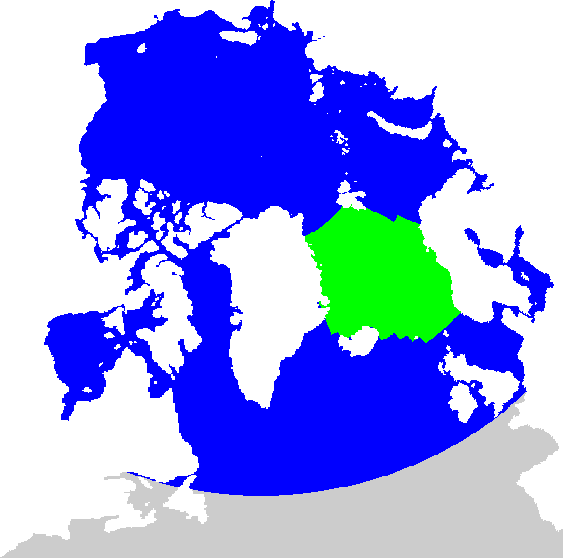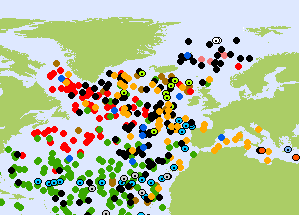Copernicus Marine Service Arctic MFC: Validation of temperature and salinity profiles
Validation results: Profiling buoy data
Computation of anomaly correlations include use of daily climatology derived from results of the ARCMFC reanalysis product, for the 20 year period 2002-07-01 - 2022-06-30, integrated over selected depth intervals (layer). Positive values corresponds to a model forecast being better aligned with observational data than the daily climatology and the observations.
Bias is defined as averages of model values - observed values.
Validation Data: Vertically profiling buoys
Validation of the Copernicus Marine Arctic MFC results for ocean temperature, salinity and mixed layer depth is performed using data from profiling buoys, which are compiled by the Copernicus Marine In Situ TAC. New sets of buoy data are available daily. For the main instrument source, vertically profiling ARGO buoys, each buoy provides one profile for each 10-day period. Most buoys cover a depth range of 0-2000 m. Read more about the Argo project here.
The ARGO profiles are supplemented by data from a few other vertically profiling instruments. The ARGO program does not generally provide observations from the Arctic Ocean. Therefore, data from Ice Tethered Profilers (ITPs) are a useful addition. Some of these are disseminated by the Copernicus Marine service. Read more about Ice Tethered Profilers here. Woods Hole Oceanographic Institution (WHOI) coordinates the ITP program. The present locations of active ITPs are shown on a map from the web pages from WHOI.
Profile data are available from the Copernicus Marine Sea Surface Temperature TAC as product INSITU_ARC_NRT_OBSERVATIONS_013_031.
Maps show temperature and salinity bias averaged over the water column from 5 m depth to 2000 m depth, or the bottom (model or actual) or maximum CTD depth in places where the bottom (model or actual) or maximum CTD depth is less than 2000 m. For the mixed-layer depth comparison, the bias is set to zero if both the model and observations indicate mixing to the bottom, irrespective of any differences in model and actual bottom depth in the position.
Validation Data: CTD profiles
The ARGO program does not provide observations from shelf regions. Therefore, the above validation is complemented here by comparisons of model results and CTD profiles from scientific-level cruises. These validation statistics is updated on a quarterly basis.
-->Layers
Validation of temperature and salinity profiles is conducted for depth averaged values in pre-defined depth intervals (layers). The intervals are
| Profiling buoys | CTD profiles (TBD) |
|---|---|
|
|
Regions

|
The ocean circulation model used in Copernicus Marine Arctic MFC covers the Arctic Ocean, the North Atlantic Ocean and adjacent ocean regions. The northern part is depicted in the figure to the left. Validation of temperature and salinity profiles from model results are performed for two domains:
|

|
ARCMFC PHYS (TOPAZ)
The model results are produced with the TOPAZ ocean data assimilation model system. Presently, TOPAZ is run weekly with data assimillation one week prior to the bulletin date, then applying a one-week 100 member ensemble simulation ending on the bulletin date. Then, for each day a 10 day deterministic forecast is produced. TOPAZ was developed and is maintained by the Nansen Center.
ARCMFC PHYS (TOPAZ) results are available as Copernicus Marine product ARCTIC_ANALYSISFORECAST_PHY_002_001 from the Copernicus Marine Data Store. An archive of historical forecasts are available from a thredds server.
